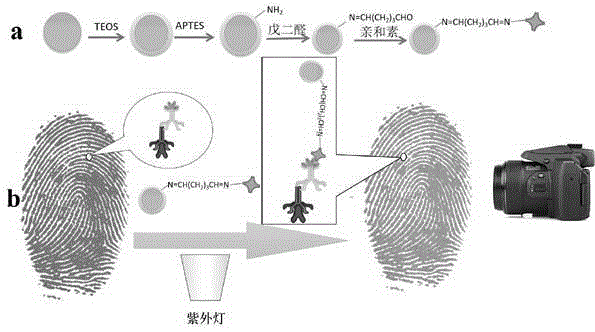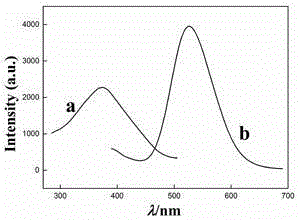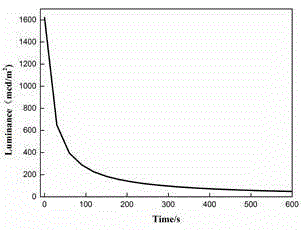Preparation method of functional rare earth long-afterglow nanocomposite and latent fingerprint imaging application of functional rare earth long-afterglow nanocomposite
A technology of nanocomposite materials and nanomaterials, which is applied in the fields of biological analysis and fingerprint detection, can solve the problems of destructive samples, cumbersome and expensive processing, and achieve the effect of no background interference
- Summary
- Abstract
- Description
- Claims
- Application Information
AI Technical Summary
Problems solved by technology
Method used
Image
Examples
Embodiment 1
[0022] according to figure 1 The schematic diagram in (a) shows the preparation of biotin-functionalized strontium aluminate rare earth doped long-lasting nanocomposites:
[0023] (1) Centrifuge the strontium aluminate rare earth-doped long-lasting nanomaterial at 3000rpm to take the supernatant, dry it in vacuum and grind it, take 1.6mg of strontium aluminate rare-earth doped long-lasting nanomaterial and disperse it in absolute ethanol and ultrasonically mix it. Add a mixed solution of 222 μL of ethanol, 247 μL of deionized water, and 6.7 μL of ethyl orthosilicate, sonicate for 5 minutes, add 25 μL of ammonia water (28%~30%), sonicate for 30 minutes, and stir magnetically at 1200 rpm for 7.5 hours. After centrifugation, they were washed with ethanol three times and dried under vacuum at 36°C to prepare silica-coated strontium aluminate rare earth-doped nanomaterials with long persistence.
[0024] (2) Disperse the material prepared in step (1) in 2mL N,N-dimethylformamide (...
Embodiment 2
[0030] Application of latent fingerprint imaging of biotin-functionalized strontium aluminate rare earth doped long-lasting nanocomposites: collect fingerprints on glass slides, drop 100 μL of a certain concentration of rabbit anti-lysozyme polyclonal antibody on latent fingerprints, and incubate at room temperature for 30 minutes. Through the specific recognition of the antigen / antibody, the rabbit anti-lysozyme polyclonal antibody binds to the lysozyme on the fingerprint ridge, and the incubated fingerprint sample is dipped in PBS buffer solution with pH 7.4 and gently shaken and washed twice. Remove non-specifically bound antibodies and blow dry with argon. Drop a certain concentration of biotin-labeled donkey anti-rabbit IgG 100 μL on the surface of the fingerprint, incubate for 30 minutes, and connect the biotin-labeled donkey anti-rabbit IgG to the fingerprint through the specific binding of the rabbit anti-lysozyme polyclonal antibody to the donkey anti-rabbit IgG The s...
PUM
 Login to View More
Login to View More Abstract
Description
Claims
Application Information
 Login to View More
Login to View More - R&D
- Intellectual Property
- Life Sciences
- Materials
- Tech Scout
- Unparalleled Data Quality
- Higher Quality Content
- 60% Fewer Hallucinations
Browse by: Latest US Patents, China's latest patents, Technical Efficacy Thesaurus, Application Domain, Technology Topic, Popular Technical Reports.
© 2025 PatSnap. All rights reserved.Legal|Privacy policy|Modern Slavery Act Transparency Statement|Sitemap|About US| Contact US: help@patsnap.com



